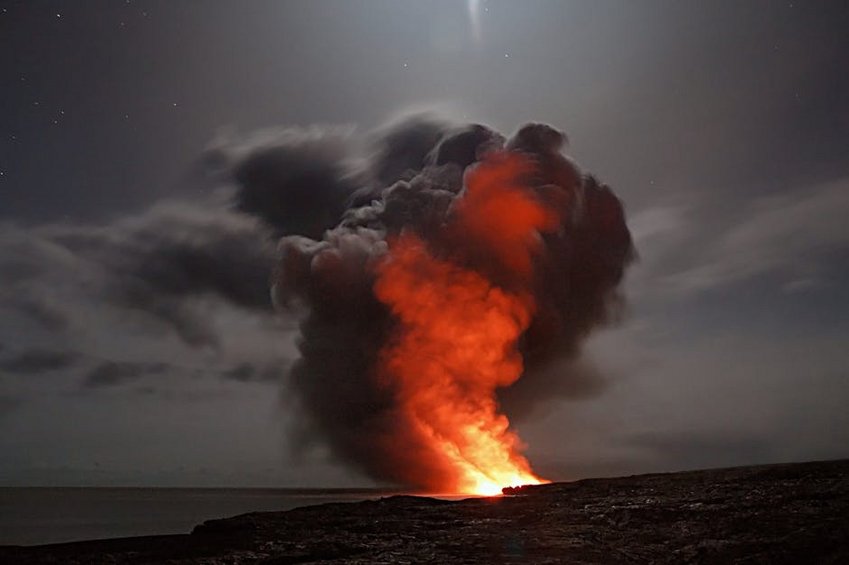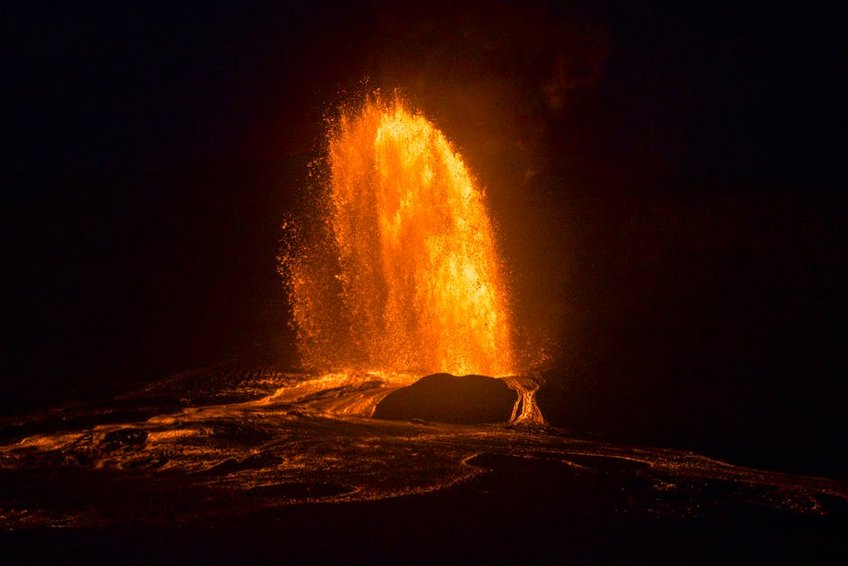South Korea Jeju Island Lava Tubes: Explore Volcanic Marvels
South Korea Jeju Island lava tubes offer a breathtaking journey into ancient volcanic landscapes formed over thousands of years. These geological wonders feature intricate lava formations, stalactites, and unique ecosystems accessible through guided explorations and well-maintained pathways. This guide covers everything from seasonal timing to cultural insights for planning your volcanic adventure effectively.
Essential Jeju Island Information
Jeju Island, located south of the Korean Peninsula, boasts a volcanic origin with Hallasan Mountain as its centerpiece. The island’s lava tubes, part of the Geomunoreum system, formed from basaltic lava flows during eruptions dating back approximately 100,000 to 300,000 years. UNESCO designated these sites as World Heritage in 2007 due to their exceptional geological value and preservation.
The volcanic caves maintain constant temperatures around 53-59°F (12-15°C) year-round, creating stable environments for unique mineral formations. Visitors encounter spectacular lava shelves, stalactites, and lava columns unlike any other volcanic sites globally. These natural attractions draw geology enthusiasts and casual tourists alike for their educational and visual appeal.
Geological Significance Explained
Understanding the lava tubes’ formation enhances appreciation for these natural wonders.
- Tube structures formed when lava crusts solidified over flowing molten rock, creating hollow passages that remained after eruptions ceased.
- Mineral deposits developed over millennia include rare carbonate formations and lava stalactites found only in specific volcanic conditions.
- Scientific research continues in these tubes regarding volcanic activity patterns and climate history preserved in geological layers.
- Budget travelers allocate $50-80 daily using public transportation, hostel stays around $25-40 nightly, and self-guided explorations with $5-10 entry fees per lava tube site.
- Mid-range visitors spend $80-120 daily including rental cars at $35-50 daily, boutique hotels costing $60-90 nightly, and guided tours priced $25-40 per person.
- Luxury experiences require $150-250 daily featuring private drivers at $100-150 daily, resort accommodations from $120-200 nightly, and exclusive geological tours costing $75-120 per person.
- Jeju Tourism Organization
- UNESCO World Heritage Centre
UNESCO World Heritage Status
Jeju’s volcanic system gained UNESCO recognition for representing outstanding volcanic landforms and biological diversity. The designation includes not only lava tubes but also shield volcanoes and oreum (parasitic cones) across the island. This status ensures continued preservation while allowing sustainable tourism access through managed visitor programs.
Protection measures limit daily visitors to sensitive areas like Manjanggul Lava Tube to 3,000 people maximum. Preservation efforts maintain original conditions while providing safe walkways and educational displays. Your visit directly supports conservation funding through entry fees and guided tour revenues.
Accessibility and Visitor Experience
Most lava tubes feature wheelchair-accessible sections with paved paths and handrails for safety. Lighting systems illuminate key formations without damaging delicate mineral structures. Multilingual audio guides available in English, Japanese, and Chinese enhance understanding for international visitors.
Tour durations typically span 40-60 minutes covering 1-2 kilometer sections open to the public. Comfortable walking shoes with grip soles essential for occasionally damp surfaces. Photography permitted without flash to preserve mineral integrity and other visitors’ experiences.

Alt: “manjanggul-lava-tube-interior-geological-formations-jeju”
Planning Your South Korea Jeju Island Lava Tubes Trip
Organizing your volcanic cave exploration requires considering seasonal weather, budget allocation, and advance reservations. Jeju’s climate features distinct seasons affecting accessibility and crowd levels at popular lava tube sites. Smart planning ensures you experience these geological marvels during optimal conditions with manageable visitor numbers.
Budget between $50-150 daily depending on accommodation style, dining preferences, and tour selections. Mid-range travelers typically spend $80-120 daily including transportation, modest hotels, and entry fees. Luxury options exceed $200 daily with premium guides and exclusive access to less-visited volcanic sites.
Booking tours 2-3 months ahead secures preferred time slots during peak seasons from March to May. Shoulder season visits in September-November offer milder weather with 20-30% lower pricing on accommodations and flights. Winter exploration possible with proper layering for temperatures ranging 41-50°F (5-10°C).
Best Time to Visit Jeju Lava Tubes
April-June provides ideal conditions with temperatures 59-68°F (15-20°C) and minimal rainfall disrupting outdoor activities. These months feature blooming camellias and canola flowers across the island enhancing scenic beauty. July-August sees heavy rainfall and higher humidity though lava tubes maintain consistent cool interiors.
September-November offers pleasant 55-64°F (13-18°C) weather with autumn foliage surrounding volcanic sites. December-February experiences colder 35-46°F (2-8°C) conditions but significantly smaller crowds at major attractions. Avoid Korean holiday periods like Lunar New Year when domestic tourism peaks.
Budget Planning and Costs
Understand typical expense categories for different travel styles.
Essential Preparation Checklist
Pack layered clothing including light jackets for cave temperatures and rain gear for unpredictable island weather. Sturdy walking shoes with non-slip soles essential for uneven volcanic terrain and occasionally wet cave floors. Bring reusable water bottles and snacks as facilities limited inside protected geological sites.
Secure necessary documentation including passport validity extending six months beyond travel dates. International drivers license required for rental cars if planning independent transportation. Travel insurance recommended covering adventure activities and potential weather-related cancellations.
Top Volcanic Attractions and Activities
Jeju’s volcanic landscape extends beyond lava tubes to include crater lakes, coastal formations, and cultural sites intertwined with geological history. The island features over 360 oreum (parasitic volcanoes) creating diverse hiking opportunities with panoramic views. Combining lava tube visits with these complementary experiences creates a comprehensive volcanic adventure.
Manjanggul Lava Tube represents the most accessible and impressive site with 1km open to public exploration. Secondary tubes like Bengdwigul and Gimnyeonggul offer alternative experiences with different formations and visitor density. Each location provides unique perspectives on Jeju’s volcanic development through distinct mineral patterns and tube structures.
Must-See Lava Tube Highlights
Manjanggul Lava Tube features the world’s largest known lava column measuring 7.6 meters high and spectacular lava shelves. Visitors traverse 1 kilometer of illuminated passageway viewing various lava formations and rare carbonate deposits. Entry costs $4-6 with operating hours 9am-6pm daily except certain holidays.
Bengdwigul Cave presents narrower passages and unique lava raft formations requiring more agility from explorers. This less-crowded alternative provides intimate geological viewing with maximum 100 daily visitors. Located near Seogwipo, combining with coastal attractions creates efficient itinerary planning.
Geomunoreum Lava Tube System includes multiple interconnected caves with exceptional preservation quality. Advanced reservations mandatory through Jeju Tourism Organization website 30 days minimum ahead. Professional guides enhance experience explaining formation processes and scientific significance.
Hidden Gems and Local Favorites
Yongcheon Donggul Lava Tube combines volcanic features with an underground river system creating unique acoustic experiences. Local guides share legends about the cave’s mythological significance in Jeju shamanistic traditions. Access requires joining small group tours limited to 15 people daily.
Sanbangsan Mountain features lava tube openings within coastal cliffs accessible via scenic hiking trails. Less documented than major sites, these formations provide photography opportunities without crowd interference. Combine with nearby Yongmeori Coast for comprehensive coastal geology experience.
Guided Tours and Volcanic Hiking
Specialized geology tours available through operators like Jeju Adventure Company and Korea Volcanic Tours. These 4-6 hour excursions include transportation, equipment, and expert commentary on formation processes. Pricing ranges $45-85 per person depending on group size and inclusions.
Hallasan Mountain trails pass volcanic features like Baengnokdam Crater Lake at the summit. Choose between shorter 3-4 hour routes or full-day 7-9 hour summit hikes requiring advance permits. Trail conditions vary seasonally with winter closures above certain elevations.
Practical Travel Information
Jeju International Airport (CJU) serves as main entry point with direct flights from major Asian cities and connecting flights globally. Transportation options include rental cars, public buses, and taxis with varying cost efficiency. Accommodation ranges from budget hostels to luxury resorts concentrated in Jeju City and Seogwipo regions.
Currency exchange available at airport and major hotels with credit cards widely accepted in urban areas. English signage prevalent at tourist sites though basic Korean phrases helpful for remote locations. Mobile coverage reliable across island with tourist SIM cards purchasable upon arrival.
| Category | Options/Features | Price Range (USD) |
|---|---|---|
| Accommodation | Hostels to resorts with breakfast, WiFi, parking | $25-200 nightly |
| Transportation | Rental cars, taxis, buses with various coverage | $15-100 daily |
| Lava Tube Tours | Guided groups, audio guides, specialty geology | $5-120 per person |
| Dining | Local restaurants, street food, international | $8-40 daily |


